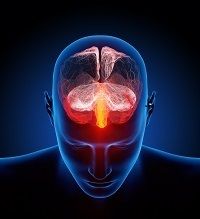Article
Migraine Risk Higher in Patients with Low Back Pain
Author(s):
The risk of developing migraine is increased for those who have low back pain, a low level of education, a heavy physical workload, or participate in heavy recreational activities, but is decreased for those who drink alcohol frequently.

Risk of developing migraine is increased for those who have low back pain, a low level of education, a heavy physical workload, or participate in heavy recreational activities, but is decreased for those who drink alcohol frequently, according to a study by Han Le, PhD student at the Danish Headache Center in the Department of Neurology, at the University of Copenhagen in Denmark. The results of the study were published in the Journal of Neurology Research.
The researchers used the Danish Twin Omnibus 1994 and 2002, which were “questionnaire studies among almost 30,000 and 35,000 twin individuals respectively” to investigate whether or not certain somatic and environmental factors contributed to the development of migraines in adults. The fact that the respondents were twins was disregarded, as they are representative of the larger Danish population as individuals.
The questionnaires included two questions related to migraines: “1) Have you ever had a migraine? 2) Have you ever had visual disturbances that lasted from 5 to 60 min and were succeeded by a headache?” The questionnaire also contained questions about several diseases and environmental factors as well.
According to the researchers, they “considered a specific disease (asthma, epilepsy and low back pain in 1994) as a possible risk factor for migraine by comparing the prevalence of self-reported migraine in 2002 in the groups with the specific disease to the prevalence in the group without the specific disease.”
The most significant increased risk of developing migraine was for people who reported having low back pain in 1994. The risk was greater for both men and women. There was no association between migraine and asthma or epilepsy.
Several environmental factors were associated with a higher risk of developing migraine, and some were more likely to lead to migraine without aura, while others appeared to lead to a greater chance of developing migraine accompanied by a visual disturbance. For example, a low level of education, a heavy physical workload, and heavy physical recreational activity increased the risk of migraine without aura, while underweight people were at a significantly higher risk of developing migraine with visual disturbance. Those who consumed alcohol weekly or more often were at a decreased risk.





